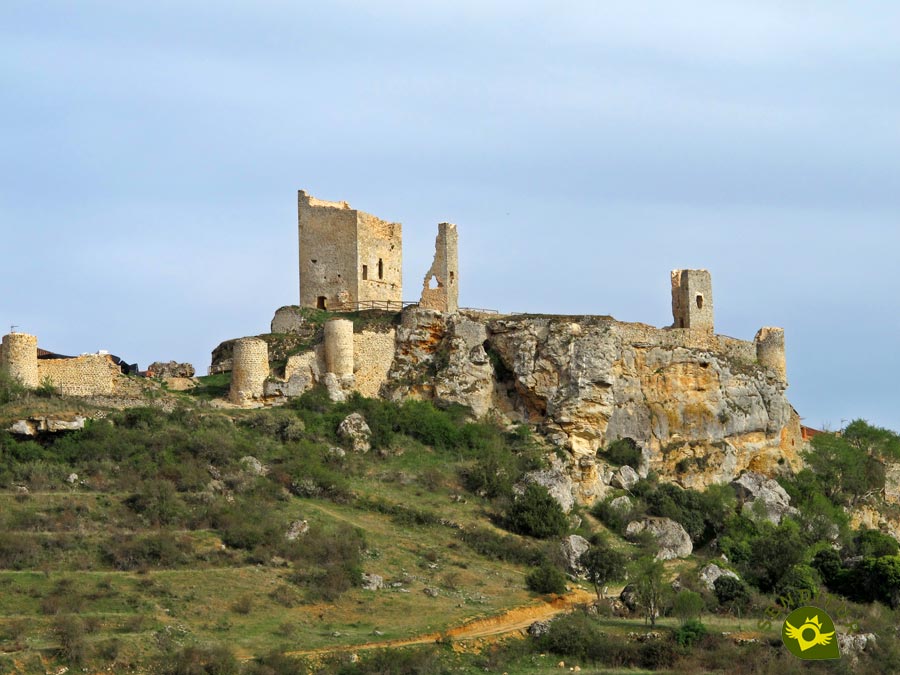It is located on top of a rocky hill, near the small Hinodejo mountain range, on the banks of the Abión river, surrounded by a beautiful natural environment whose maximum exponent is its juniper forest. This walled town of Visigothic origin is located in an area that was already inhabited in Celtiberian times, although at that time it was known by the name of Voluce. The remains of this settlement are located one kilometre southwest of Calatañazor, on the Cerro de los Castejones, a name and settlement also used by the Romans.

With the arrival of the Visigoths it seems very probable that the population settlement already occupied the hill where the present Calatañazor is located, although this name is due to the Muslims when they occupied it in their expansion throughout the peninsula. After the death of Almanzor in the year 1002, Calatañazor was recovered and repopulated by the Christians. The lordship of the Padilla family was established in the area and the village experienced a period of prosperity until it began to decline in the fourteenth century. In the seventeenth century the locality was part of the possessions of the Dukes of Medinaceli and a century later it became the property of the Marquisate of Feria. Since the 19th century it has been a municipality in the province of Soria.

The town of Calatañazor was fortified at the beginning of the 12th century, during the reign of Alfonso I el Batallador, and its wall, which is largely preserved in its perimeter, gives the town, from a distance, the marked medieval character that it also displays in its urban layout, whose main axis is marked by a steep street with cobbled ground that converges in the Main Square where the stones of the Picota de Justicia or roll keep centuries of stories and legends. The porticoed houses, with walls made of a mixture of straw and mud, which are supported on wooden props, are crowned by curious and striking conical chimneys that are topped by a pointed metal decoration.

The church of Santa María del Castillo, originally Romanesque, was renovated in the 16th century and houses an 11th-century Romanesque baptismal font. On the outskirts of the village is the hermitage of La Soledad, which still has its original header and doorway. A few ruins speak of the Church of San Juan Bautista and the hermitage of Santa Ana, as well as its stately castle on top of the hill, of which the best preserved is the keep that was built in the 14th century and is located on the wall overlooking the town. From the castle you can see the extensive plain known as the Valley of the Blood. For all these reasons, which Calatañazor guards and preserves with pride, the town has held the title of Historic-Artistic Site since 1962.

Calatañazor celebrates its patron saint festivities in honour of the Santo Cristo del Amparo in the second week of September and around the 2nd of July it celebrates its patron saint Santa Isabel.
In a setting as incredible as Calatañazor and where so many poets and writers have fallen in love with it, like Julián Marías who wrote: "To reach the year 1000 you have to leave through Golmayo, cross the Soria paramera, where the sheep are squeezed... And suddenly, in a bend, to the left, the incredible, Calatañazor", it is not surprising that one of its most relevant events is the Medieval Music Days, which is celebrated every Saturday in August and has as its stage the Church of Nuestra Señora del Castillo and the Hermitage of the Virgen de la Soledad.
The Calatañazor Sabinar Natural Area is a forest with ancient species of juniper. Example of the thickest juniper forest in the world, it was declared a Natural Reserve in the year 2000 and is also part of the largest and best preserved juniper forest of moorland tree on the peninsula. This tree adds to its great ecological value its berries, fruits that feed in the winter months to crows, magpies, thrushes and other birds, making it also a very desirable winter forest for bird lovers.

Legend has it that the name of the "Valley of the Blood" on the plain that can be seen from the castle of Calatañazor is due to the blood shed in the battle that the Christians fought against the Moors, under the command of Almanzor, causing them their first defeat. Blood that soaked the entire valley, staining and giving colour even to the waters of the river. On the day of the battle a strange character was heard crying, sometimes in Arabic and sometimes in Romance language: in Calatañazor Almanzor lost his drum.
MORE ROUTES AVAILABLE, DON'T MISS IT...
MORE PLACES AVAILABLE, DON'T MISS IT...
To reach Calatañazor the access road is the N-122 that joins Soria and Valladolid, approximately 25 km from Soria we must take the detour that, following the SO-P-5026, leads to Calatañazor. This same road, but in the opposite direction, connects Calatañazor with the nearby town of Muriel de la Fuente.
There is a bus that covers the route between the city of Soria and Calatañazor. The service is provided only on Mondays, Wednesdays and working Thursdays. You must reserve a seat by calling 900 204 020
SENDITUR is not responsible for any variation in the information described, as well as for the misuse of its guides and recommends that everyone be responsible and prudent in carrying out the activity. Likewise, we invite you to document yourself with books and specialized guides to complement the information described. From the commitment of SENDITUR with Nature and the respect to the balance of the environment, SENDITUR urges you to travel in a responsible way, with low environmental impact and respecting at all times the Natural, Cultural and Social environment wherever you go. For any suggestion, SENDITUR invites you to send an email to .
Continue watching …